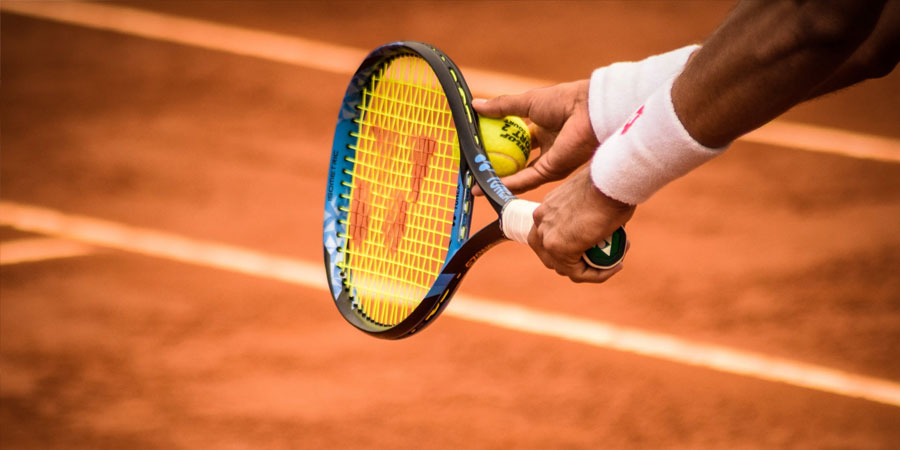Andy Murray practices Pilates. That’s right, the new Wimbledon champ credits Pilates as the extra factor that helped his tennis game. Why? Pilates is great for tennis because it strengthens your muscles in a low-impact way, so the body stays strong without pain. Pilates also stresses power, control, and flexibility in every exercise, three things that are important when playing tennis. Julie Erickson from Endurance Pilates and Yoga recommends these five exercises to improve your tennis game.
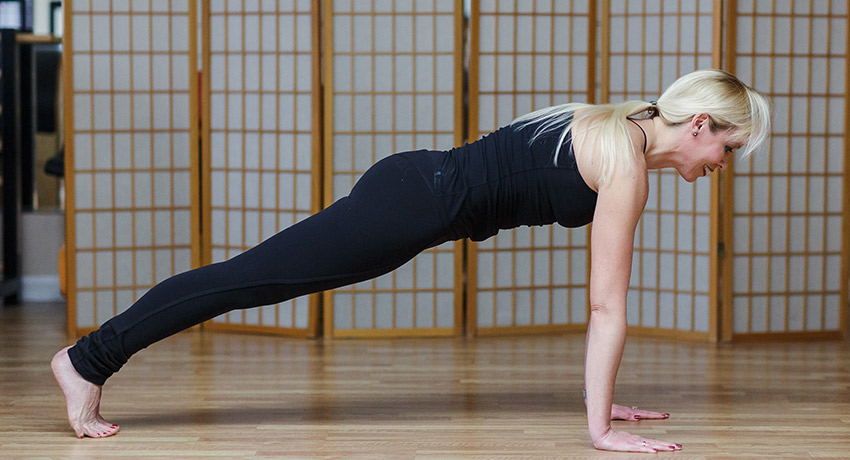
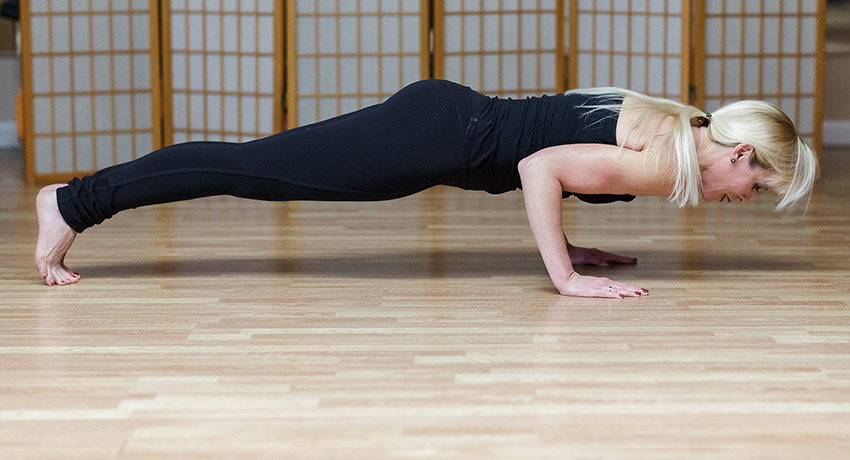
Pilates Push-up
How to: From a standing position, roll down with straight legs and place the hands to the floor. Walk out to a plank position in four counts, then do one push-up with narrow elbows, and the body will move forward and down. The elbows should point back and touch the ribcage. Walk back to your original position with the legs straight and roll to standing. Then repeat the movement: roll down again, then walk out to a plank in four counts, completing two push-ups. Walk back and roll to standing. Continue until you complete a 10 push-up set. The secret to push-ups is utilizing the entire body for stability, including the legs and the core, so you should feel the rest of the body working as much as your arms. When the entire body is involved in supporting the weight, the arms are able to bend and extend more easily.
Muscles worked: All of the muscles in the torso will work as you try to maintain a straight and long alignment from your abs, to your core, and your back. The push-up works the lats and rhomboids to keep the shoulders in the proper place, and your arms and shoulders will work to move the torso, targeting the triceps during the push-up. This movement also works the legs for stability. In fact, the legs should be where your focus on stability starts so that the arms can handle the movement work. Most of the challenge of this push-up involves rolling down and walking out.
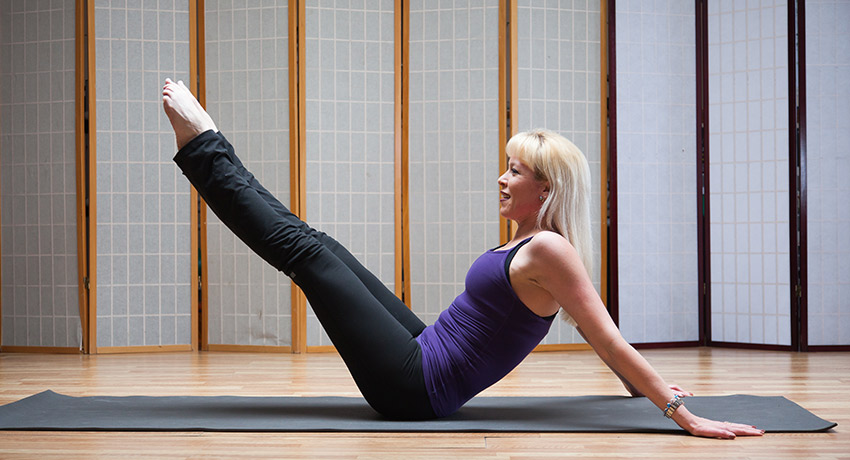
Hip Twist
How to: Sit with your legs reaching at a 45 degree angle, with arms reaching straight back to match the legs and to help lift the chest. Keep your feet together and draw a circle with the legs around to the right, then to the left, stopping at 12 o’clock each time and then reversing direction again. Try to make the circles bigger and smaller and see if you can sit up straighter every time you make a circle. Keep the upper body absolutely still as the legs reach away, and pull the belly and pelvis back so nothing moves with the legs. Try 10 circles in each direction.
Muscles worked: This movement works the lats, rhomboids, trapezius, and all of the back extensor groups, as well as the triceps and all of the back of the arm muscles to keep your shoulders in their proper place. This movement also opens the chest and the fronts of the shoulders. While working the legs for stability, the upper back should be where most of the stability focus starts in order for the legs to handle the movement work. This exercise rotates the lower part of the body, targeting the obliques and lower part of the rectus abdominis.
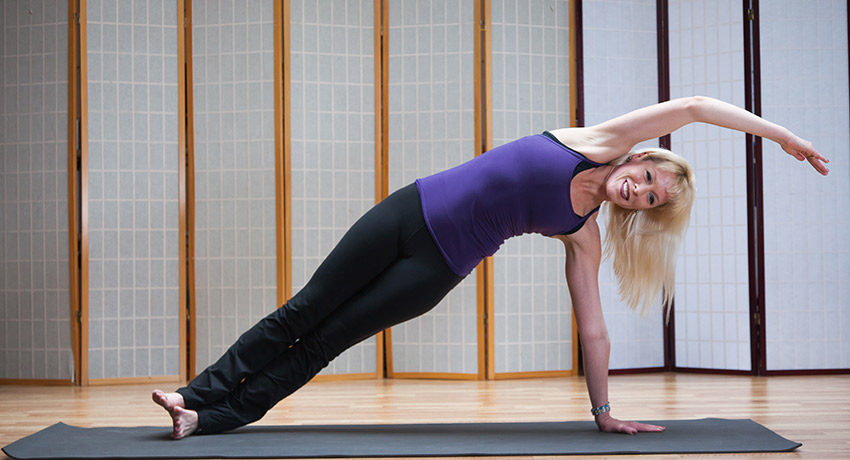
Side Bends
How to: Stack one foot on top of the other and press your feet into floor, pressing into the bottom hand and lifting your body with your lats away from mat, stretching the hips toward the ceiling and reaching the upper arm and feet away from each other. Lower your hips five times with control so that they graze the floor, then lengthen whole body back into an arc position, increasing the lift and reach every time. Switch sides.
Muscles worked: Side bends are challenging because they work the muscles that laterally flex the spine. We are very used to working back and forth, but when we introduce side body stability and mobility, things get difficult. The lats, abs, and deep core muscles are the main focus of this movement, along with the leg muscles for stability and the back muscles to move the spine properly into the side bend position. To move back and forth with precision and control on the court, tennis players need to be very confident in their lateral movements.
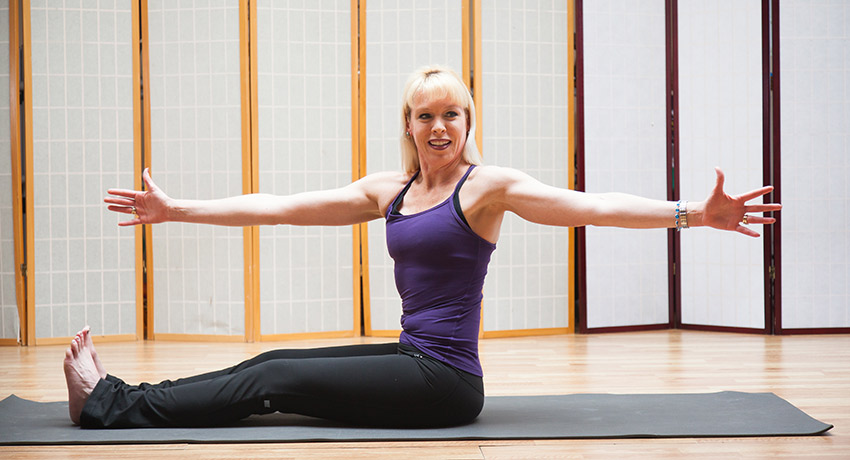
Spine Twist
How to: Starting in a perfectly upright position with the pubic bone and tailbone aligned, rotate the ribcage to the right, keeping the nose in line with the breastbone. Lift the ribcage off of the hips to rotate further, exhaling and growing taller as you lift and twisting further until the waist has cinched in as much as possible. Unwind back to the center and repeat on the other side. Make sure that the hips stay fixed and the legs stay grounded to the floor without moving at all. Try 10 twists on each side.
Muscles Worked: This movement stretches the internal and external obliques and uses the transversus abdominis, rectus abdominis, and back muscles for stability and controlled mobility. This is a great exercise for any sports, like tennis, that require controlled rotation and flexibility for power.
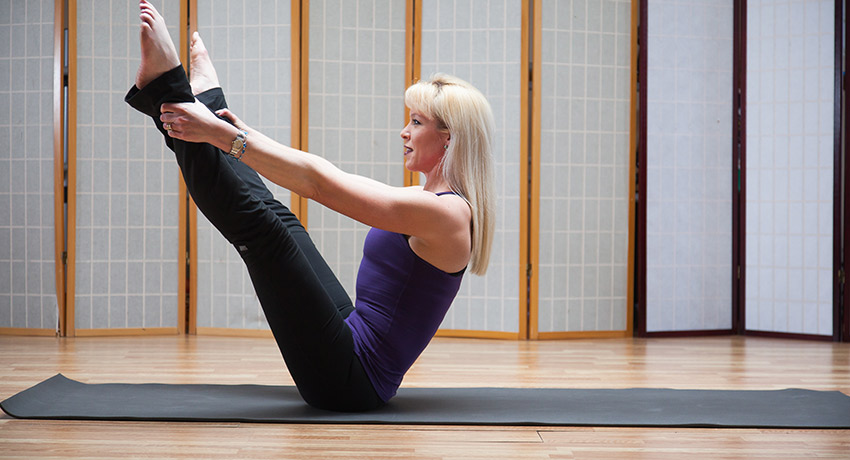
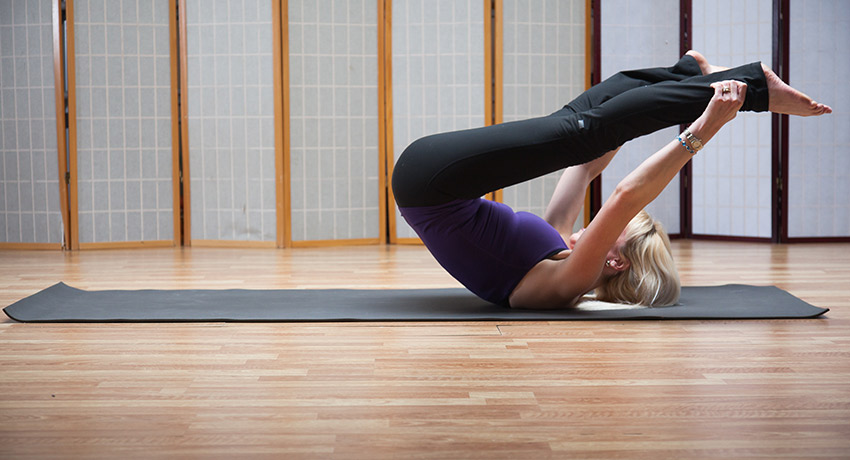
Open Leg Rocker
How to: Sit up tall with the legs extended in front of you, and use the belly muscles to rock the pelvis back and to lift the legs from the floor and into your hands. Scoop the belly in and look toward the belly button. Roll back, keeping proximity between the ribs and the hips as you roll back, and thinking of lifting the tush, too. Think of lifting from the chest to rollup, and make sure that the distance between the chest and legs stays the same throughout the exercise. Ensure that the lower back touches the mat on the way back and on the way up.
Muscles Worked: This uses the deep core, abs, shoulder girdle, and mid-upper back muscles to maintain proper flexion during the roll, and it also works the rectus abdominis, obliques, back of legs, and erector spinae when you return to a balanced position. Scapular stability is needed throughout the exercise, and the hip flexors and extensors will assist in pelvic movement and leg placement. This movement is especially important for those long tennis matches when our muscles and will are fading. We lose the ability to keep our torsos upright, so we need to have endurance in all of those muscles so that they are trained and ready to assist throughout the duration of the game.
Source: https://www.bostonmagazine.com/health/2013/08/01/improve-your-tennis-game-with-pilates/

